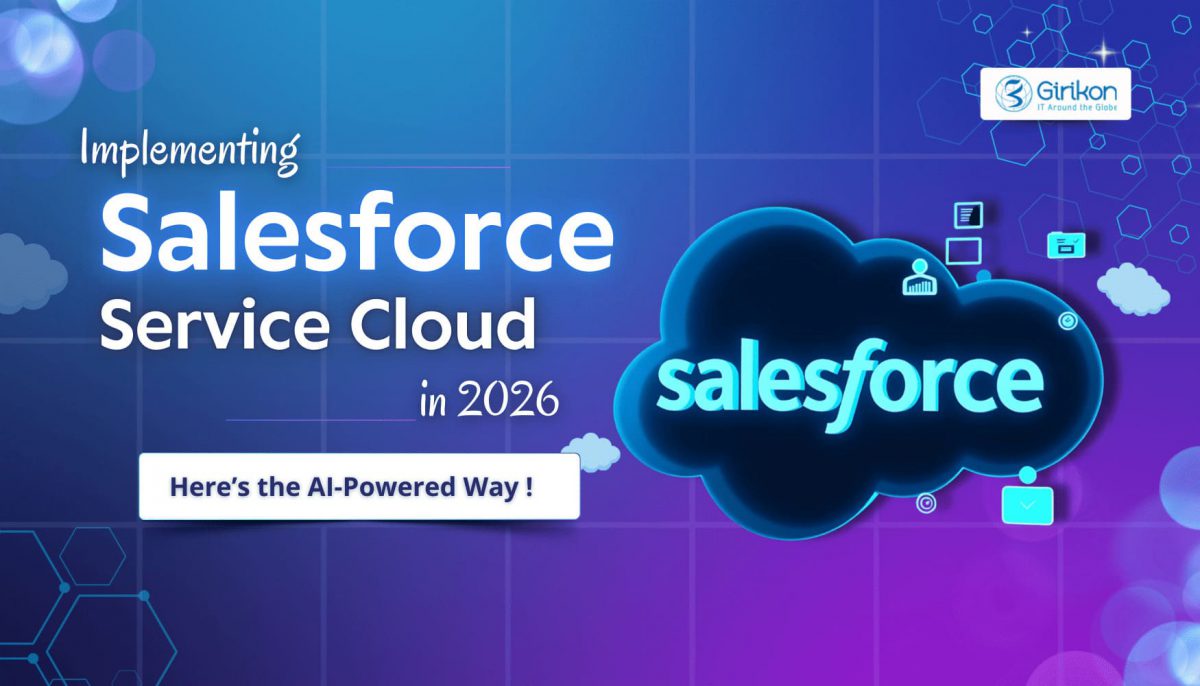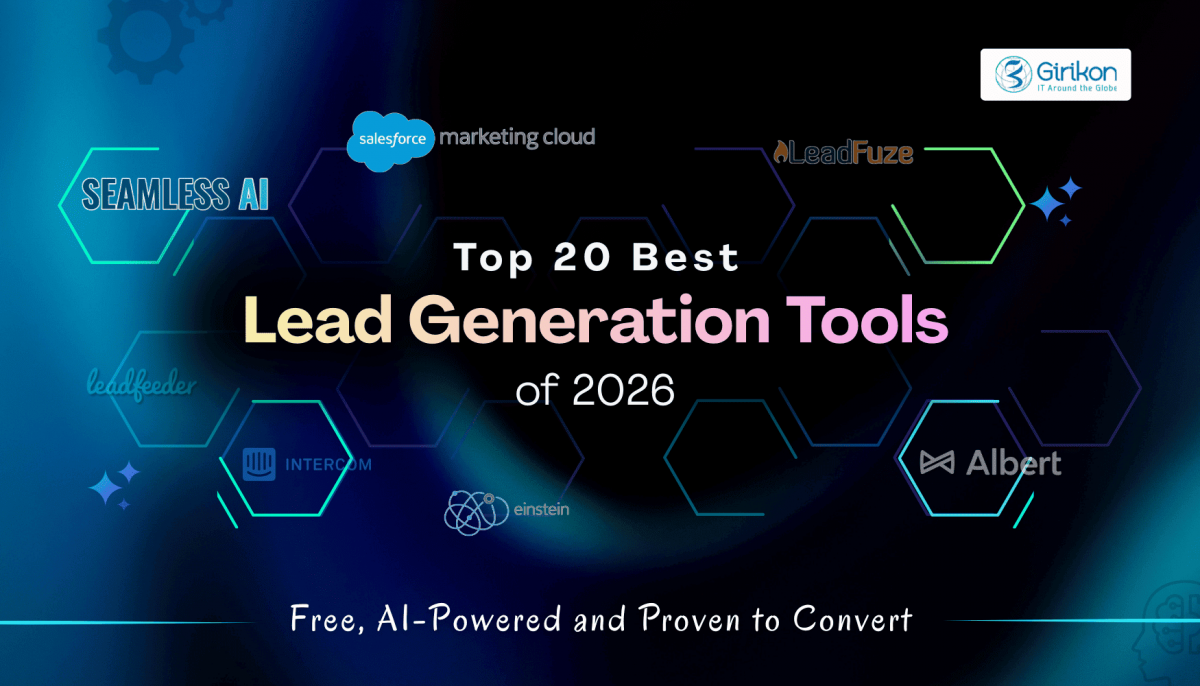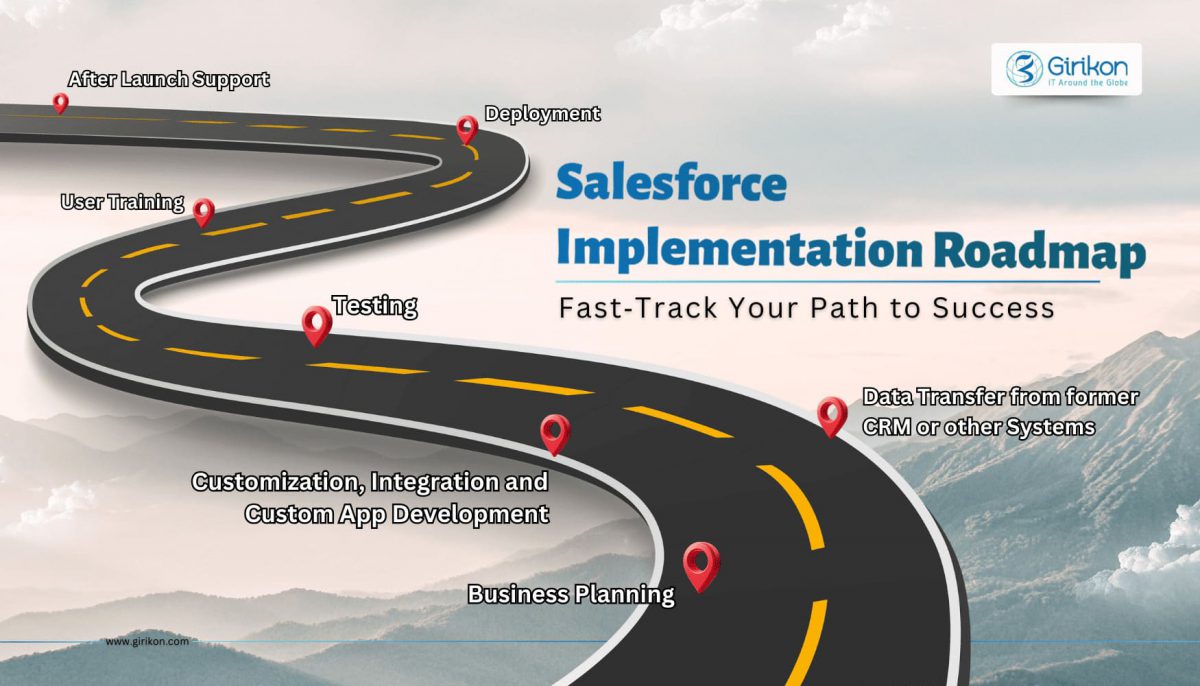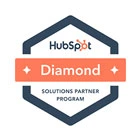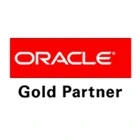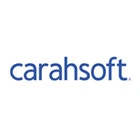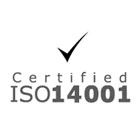The success of a business is directly proportional to the extent their customers are satisfied. With a robust CRM (Customer Relationship Management) system like Salesforce in place, organizations will not just be able to improve their customer relationship but will also be able to increase their sales and revenue. As a leader in the CRM space, Salesforce has displayed promising statistics, which includes an annual growth of 29% in the financial year 2020. Apart from this, its customer base, which currently stands at 150000 is also increasing year on year. To, implement Salesforce, organizations should seek Salesforce Support from a reliable service provider.
Here are some of the latest trends that will rein the Salesforce CRM space in the year 2021 and beyond:
Customer 360: Uncertain situations like the recent Covid-19 pandemic have forced businesses to change the way they function. While customers have become digital-first, organizations too are moving towards digitalization to retain their customers. However, to sustain the market competition, organizations should equally focus on creating innovative solutions rather than just digitalization. Statistics reveal that around 69% of customers look for digital ways to get their products and services while 54 percent of them are seeking other ways to connect with a company. For the year 2021, Salesforce is coming up with a customer 360 tool that will enable companies to get a complete view of their customers.
Data Analysis: Organizations these days are looking to analyze the data of their customers from multiple sources such as social media profiles, phone support, newsletter, etc. However, a report shared by Salesforce reveals that only 50 percent of companies can access all the data. This happens because most of the data is dispersed, which makes it difficult for organizations to analyze and visualize it. Consequently, organizations are adopting Salesforce as it helps them to gather data in a single place so that the sales, service, and marketing teams can work together without any doubt. Salesforce empowers organizations to create a data-driven approach by bringing together sales, service, and marketing cloud to arrange for data using customer 360 solutions.
Artificial Intelligence and Machine Learning: The AI-powered platform by Salesforce i.e. Salesforce Einstein provides actionable insights and suggestions that help organizations to make informed decisions. The platform has built-in deep learning models that predict by reading CRM data. Few other features that show how Salesforce is utilizing AI and ML to develop intelligent platforms for an organization include the following:
Tableau:Tableau is a business intelligence and analytics software that helps in creating a dashboard within a few clicks.
AppExchange:It is a marketplace for third-party apps. Salesforce is working to upgrade it by offering apps that are more installable to increase sales and client interactions of the businesses.
Analytics that is Voice Enabled:Salesforce launched Einstein’s voice, which uses NLP (Natural Language Processing) for processing the user request. Users can update records using their voice. Einstein voice bots empower users to create their voice assistants for custom apps.
Salesforce Ecosystem: As one of the most popular and widely adopted CRM software, numerous applications can be integrated within the platform, which in turn helps in extending its capabilities and functionalities.
Lightning Web Components: These are HTML elements that empower users to create lightweight UI designs.
Mobile Applications: Salesforce is striving to get the entire CRM into a mobile app for which it has laid a solid foundation to achieve the goals. Some of the upgrades aimed at by Salesforce include the following:
Salesforce has re-developed the native Salesforce app by partnering with Apple to make the most of Siri and other Apple features.
It has developed low-code mobile builders that allow users to convert spreadsheets to apps without the need for any formal training.
Industry-specific Platforms: Though Salesforce is more efficient in Sales, marketing, retail, and finance, it has now started developing solutions for other industries given the growing demand.
Final Words:
Being one of the most popular and widely adopted CRM, Salesforce keeps on innovating to provide users with a more efficient and robust platform. By implementing the aforementioned trends, Salesforce is striving to transform the CRM industry. To stay ahead of the race, organizations will look for business-specific solutions, which Salesforce is striving to fulfill. It’s prudent to partner with a certified and experienced Salesforce Consultant to know more about Salesforce and its latest offerings.
In today’s era of the cut-throat business landscape, success-oriented organizations are looking to incorporate multiple channels into their sales and distribution processes to stay competitive while creating integrated and intelligent buying experiences for their customers by using robust e-commerce solutions. Such a solution will not just impact their operations, agility, and scalability but will also transform their customer experience.
Salesforce e-Commerce cloud is one of the leading solutions that is endowed with a wide array of features and applications that have significantly benefitted the commercial sector. As one of the leading B2B and B2C solutions, the Salesforce commerce cloud with its multi-tenant architecture empowers organizations to create a unified and intelligent buying experience across different channels.
Why Salesforce e-Commerce cloud is a preferred choice?
The software as a service (SAAS) platform provides a set of powerful tools that allow organizations to connect with their prospective customers or buyers at every stage of the sales process while providing them with outstanding support across different channels. Given the evolving customer behavior with each passing day, organizations require omnichannel insights to analyze users’ behavior and engagement across various channels.
What sets apart the robust platform from other e-commerce platforms is its integral predictive intelligence i.e. Salesforce’s Einstein AI. This in-built advanced predictive intelligence system aids in providing a matchless shopping experience by delivering smart insights regarding customers’ behavior, their purchasing patterns while identifying options to sell across different untapped channels. To know more about this platform, organizations can seek Salesforce support from a reliable service provider.
Benefits of Leveraging Salesforce e-Commerce Cloud
Predictive Intelligence: The disadvantage to working with third-party integrations is that the system used to run a business becomes disengaged and can bring a business to a standstill. The Salesforce e-Commerce cloud is bundled with predictive intelligence that does away with the need for manual data analysis. The AI (artificial intelligence) powered technology i.e. Salesforce Einstein is integrated into the Commerce cloud and allows organizations to deliver enjoyable and personalized shopping experiences on different channels.
Enhanced Marketing Tools: The commerce cloud offers a wide array of tools that empowers retailers to manage product details, images, and content cross catalogs, categories, and sites. All these things can be unified across various sites, currencies, and languages. This enables marketers to connect customers with the right products, price, offer and content at the right time to maximize the rates of conversions while increase average order value. Eventually, brand marketers are empowered to launch campaigns, drive business growth, optimize conversions, etc. without any technical support.
Cost-efficiency: Businesses leveraging this software can enjoy cost-efficiency as they need to pay for what they need. In case their requirement changes, they can seek assistance from their SaaS provider to scale up their system.
Flexibility: One of the significant aspects of this platform is its flexible nature. This allows businesses to scale up their resources w.r.t to a huge or unexpected spike of traffic that too without any user intervention.
Security: The commerce cloud is a highly secure platform that allows businesses to move their operations to the cloud. As compared to the local hosts, the security of cloud data is much better.
Unified Experience: One of the most convincing benefits of Commerce Cloud is the way it brings together all the channels to generate a unified customer experience. So, instead of considering their brick-and-mortar outlet, online store, social selling, etc. as separate entities, organizations can bring all of these together for the benefit of customers.
Mobile Focussed: Having a mobile-optimized store is essential for creating a gratifying and frictionless customer experience. Salesforce commerce cloud takes a mobile-first approach while managing everything from point of sale in brick-and-mortar outlets to operations in online stores. This provides a great shopping experience to mobile users.
Final Words:
In a nutshell, Salesforce Commerce Cloud is a robust and scalable eCommerce platform that is endowed with a wide array of features for store management, merchandising, customer segmentation, and more. So, if you are looking for a powerful e-Commerce platform for managing your infrastructure then Salesforce e-Commerce cloud can be the right solution for you. So, if you have made up your mind to migrate your business to Salesforce e-Commerce cloud then, you must consider partnering with a certified Salesforce consultant.
In this era of cut-throat competition, organizations should ensure a smooth and better customer experience to sustain positive business growth. In fact, retaining existing customers and acquiring new ones depends largely on the way a company interacts with its customers. Yet, only 1% of the customers are capable of measuring their customer engagement.
One of the primary reasons why a company fails to connect with its customers completely is its inability to accumulate and utilize crucial data, which they can leverage to gain insights for creating operational customer strategies. This calls the need for an intelligent solution that can enable organizations to explore new ways to connect with their customers, and Salesforce Lightning is one such platform.
Built on the Salesforce UI framework, Salesforce Lightning involves a collection of tools and technologies that can be utilized to draw insights about customer engagement. This app development platform not just helps in driving business growth but also boosts user experience. Today, organizations especially those leveraging Salesforce have realized the potential of the Lightning platform and consider it to be a superior choice to any other options available in the market. It makes sense to seek support from one of the best Salesforce partners to know more about the Lightning platform.
Endowed with enhanced features, the Lightning platform allows users to develop strong customer relationships while finding new ways of interacting with customers. Listed below are some significant benefits of Salesforce Lightning that help you to better connect with your customers:
Quick Building of Apps: The components available in Salesforce Lightning kick start the building of apps that too without the need for any coding. The components available act as building blocks that combine to create new apps. This saves the time and effort of building apps from scratch besides the trouble of optimizing your apps as the components can do so for different devices. Apart from this, additional components from App Exchange can be used to develop the foundation of your app, which you can customize as per the specific needs of your company.
Availability of Quality Resources: Besides the provision of building robust apps with the help of tools and methods, the Lightning ecosystem offers components that can be leveraged to add new functionalities that otherwise seemed impossible without the help of a developer. Moreover, the quality of applications isn’t compromised as the components used to build them are derived from reliable resources. Since, reviews of these apps are gathered from experienced users, customer engagement increases.
Drives Innovation: Developing mobile apps has become significant for enhancing customer business as it helps to personalize communication. The drag and drop functionality of the Lightning platform encourages innovation as it is packed with customizable components.
Syndicates User Experience: To remain competitive, organizations need to set their products/ services apart from the competitors. By providing experience with a live-in experience, organizations can get an edge over their competitors. The Lightning Design System equips organizations with a ‘How-To guide’ that provides organizations the power to build user-friendly components. Thus, it becomes easy to develop custom apps that sync with the main capabilities of Salesforce without the requirement for reverse engineering.
Provide Engaging Experience: Although Lightning was developed with mobile devices in mind, it also included the desktop within the design and experience and was ultimately employed across app design, service, sales, and communities, which provides an engaging face to your company.
Final Words:
To provide customers with an engaging and enriching experience, organizations should encourage customer-centricity. The Salesforce Lightning platform helps in driving engagement by providing a sturdy environment along with robust features for creating a great user experience. So, if you are looking to migrate to the Salesforce Lightning platform, you must consider getting in touch with a reputed Salesforce Lighting company.
The healthcare industry is extremely competitive and versatile. To sustain in this competitive landscape, the healthcare industry requires evolving and taking healthcare innovation to new heights. Though, healthcare organizations are focused on improving patient care, as well as their processes, most of them still rely on legacy systems that are inefficient to meet the evolving needs of the organization, as well as its customers.
This is because customers are looking for easy access to quality healthcare services along with personalized care. To drive innovation, healthcare players require adopting technology solutions such as a robust and comprehensive CRM system. Such a system besides helping manage patient data securely and integrating various processes for driving higher productivity also maximizes customer satisfaction level.
As one of the most popular CRM, Salesforce offers Health Cloud – a patient relationship management system that has now become an indispensable tool for healthcare companies. To know more about this innovative cloud solution, organizations should consider partnering with one of the reputed Salesforce development companies.
What is Salesforce Health Cloud?
Salesforce health cloud is a cloud-powered solution that is leveraged by medical organizations for managing their patient relationships. It allows users to get a comprehensive view of a patient by integrating data available from medical records stored electronically, create smarter care decisions, and connect patients with their caregivers while managing entire patient data.
The cloud-powered solution empowers organizations across the globe to associate their workers, patients, and collaborators with instant information and augment their protection and well-being. The solution can be promptly positioned and can be significant to small and large organizations alike.
Some of the Key Benefits Offered by Salesforce Health Cloud
So, whether you identify yourself as a payer, a provider, a pharma, or a medical devices company, Health Cloud offers tangible benefits for your in-house teams and your customers. Listed below are some of the significant benefits of the Health Cloud solution.
For Providers:
Salesforce health cloud doesn’t replace your EHR (Electronic Health Records) rather it enables you to unravel legacy systems and integrate apps in a flexible platform while using insights for impelling a patient-centric approach to care. Besides enriching your EHR, Health cloud offers the following benefits specifically for the providers:
The cloud solution offers a complete view of patient data including minute details such as appointment history, current health status, specialists and medications recommended that too in a single place. It helps in creating a customized care plan for patients while building connections in the caregiver community thereby providing a complete patient experience.
By leveraging private Salesforce communities, patients and caregivers can securely communicate with each other by sending and receiving messages to each other.
For Payers:
Since Health cloud offers certain features that are tailored to the needs of the health insurance industry, payers can engage with providers and other members in an efficient way.
It is possible to get a 360-degree view of members through proactive identification of risks, operation management, and real-time incorporation of apps with EHR’s and legacy systems.
By having a complete picture of members, agents can provide personalized communications and other support services through quick and intelligent recommendations. Agents can provide detailed support and quicker resolution to cases if they have access to detailed information about the members.
For Pharma/Biotech Companies:
Health Cloud enables Pharma companies to:
Streamline compliance: Patients can have quick access to medicines through prior authorizations, patient sign-ups, and accomplishment tracking. These steps act as an initiating point to scale-up treatment-specific programs so that operational costs can be reduced and the quality of healthcare can be enhanced.
Gather information from patients or their HCP (Health care providers) directly regarding approval of scripts, prior approvals, product complaints, and other information that can be easily analyzed for the purpose of reporting.
Personalize the patient experience by helping pharma companies and patients or their providers to connect across their desired devices that too in real-time. The cloud solution offers case management capabilities offering any point access that helps organizations to understand where a patient is in his/her healthcare journey at any point in time.
Final Words:
The Health Cloud solution by Salesforce is a healthcare CRM with infinite potential and can be leveraged for improving patient relationships and enhancing the quality of medical services. However, to make the most of this robust solution, it is necessary to integrate the Cloud into the existing systems and software infrastructure of the healthcare organization and tailoring it to meet its specific needs through tailor-made apps and add-ons. To leverage the benefits of Salesforce health cloud, it’s prudent to get in touch with a reliable Salesforce partner who can help you understand, implement and integrate the robust solution.
The business landscape has become extremely competitive in today’s digital era. Apart from the market competition, evolving customer needs have pushed organizations to prepare for the future. To sustain themselves, organizations are leveraging technology solutions like a CRM (Customer Relationship Management) system to stay ahead of the race. As a cloud-based CRM system, Salesforce continues to be a preferred choice of customers looking to efficiently manage their customer relationship while ensuring operational efficiency by streamlining business processes.
Salesforce with its wide array of features, functionalities and cloud solutions can be leveraged by organizations to resolve their unique business problems. However, sales reps are always in a dilemma as to which Salesforce product to opt for especially between sales cloud and customer service cloud as both of them have objects like contacts, leads, opportunities, cases, etc. in common.
However, the basic difference lies in their functionality, and organizations should make their choice basis their specific business needs. Let’s take a quick look at the features offered by each one of them:
What is Sales Cloud?
This Salesforce product is designed to manage, automate, and analyze the sales processes of an organization thereby increasing the efficiency of the sales team. Sales cloud benefits both sales reps, as well as sales managers by helping them accomplish their tasks with efficiency. Since, the Sales cloud functionality can be leveraged to automate customer communication and other activities such as call logging, sending of emails; record-keeping, etc. sales reps are left with sufficient time for nurturing of leads and closing more deals. Sales managers on the other hand can assess the performance of sales reps while developing a strategy that aligns the processes of sales and marketing teams.
Some of the key Features Offered by Sales Cloud
Contact & Lead Management: This feature helps sales reps to manage leads, contacts, campaigns, and sales frequency to close more deals.
Mobile optimization: This means integration with mobile, which in turn ensures more flexibility. Sales reps can now have easy access to workflows; manage leads easily, clip dashboard, track reports, etc. all at your fingertips.
Reports & Dashboards: Organizations can well manage their business by having access to regular and detailed reports regarding organizational growth, and progress. They can also recognize the insufficiencies to upgrade processes that require the most attention.
Work Process Approval: The Sales cloud interface allows organizations to plan their business in a better way as everything including sales, expenses, and discounts could be availed at one place.
What is Service Cloud?
It is an important business tool that positively impacts customer retention rates as retaining an existing customer is cheaper than gaining a new one. The cloud platform provides integration with numerous communication channels that are present within the service cloud UI, which helps sales reps to serve their customers quicker and better. The knowledge base created acts as a useful source of knowledge, which can help service agents to reduce their response time and train agents quickly. Service agents can provide a quick resolution to customer issues as the cloud platform offers service process automation.
Customer service managers can gauge the performance of service agents by accessing the reports on customer satisfaction. This gives them a fair idea of the training and Salesforce support they would have to provide the agents.
Some of the key Features Offered by Service Cloud
Service Console: Experts handle and manage organizational tasks to help customers better respond to their services.
Chat service: Live Chat is automated, which assists customers looking for solutions.
Customer service: This helps in processing customer queries via social media without looking for other websites.
Knowledge Base: The knowledge base created can help service reps to better understand customer queries and provide a quick resolution to them.
Email to Case: his feature helps in automating email responses w.r.t case submissions depending on the characteristics of the record.
Sales Cloud vs Service Cloud: What Should You Opt For?
Although Service Cloud has a lot in common with Sales Cloud, it does not mean that both the products can be interchanged. Since sales cloud offers features that help in turning a lead into an account, it is recommended for sales-centric organizations. On the other hand, the service cloud is recommended to customer service-centric organizations as it provides features for customer service management and improvement for agent productivity. For organizations having both sales and service requirements, a Sales + Service package is recommended.
Final Words:
These are some of the basic differences between the two cloud platforms that can help you decide which cloud platform to opt for as per your business need. It is prudent to get in touch with a reliable Salesforce partner who can help you with the right solution for your business.
Today, every industry is undergoing digital transformation. Today, forward-looking organizations are becoming future-proof by building their businesses on the foundation of API-led connectivity. Alternatively, organizations that lack APIs are finding it difficult to keep pace in the digital age. In other words, successful organizations are aware of the fact that the more they are associated with an ecosystem of applications, partners, developers, and customer experiences, the more will their APIs grow in value.
Today, as the API economy evolves, more and more organizations are collaborating with other members of the ecosystem to co-create API-based products. Such partnerships are not just mutually beneficial for those involved but also offer value to their combined customers. Consequently, organizations are expected to reimagine value creation by collaborating with their partners as they are endowed with customer-centric thinking. Such an ecosystem that offers value to every participant including the company that hosts the ecosystem, the developers, partners, and ultimately the customer offers a win-win situation.
While there is no dearth of advice regarding APIs on the World Wide Web, companies tend to feel confused with so much information at their disposal during their API journey. In such situations, they can avail MuleSoft consulting from a reputed service provider. Listed below are some best practices that can help organizations cultivate a thriving API ecosystem:
Begin with Customer Experiences: Irrespective of whether the end-user is your customer, developer, or an internal stakeholder, it’s important, to begin with defining the best possible customer experiences. This strategy which is known as ‘outside-in strategy’ depends on customer needs and preferences and takes into consideration developers, direct customers of API, and the end-users the developers serve. This approach requires the collective imagination of both IT and business teams to come up with next-gen customer experiences.
Get Hold of Ecosystem Principles: As organizations, today are using APIs as building blocks for creating an ecosystem and reusing the same in the API economy for future growth, they must follow the following ecosystem principles to unravel innovation:
Organizations should change their outlook of considering API as products and services, which acts as a hurdle to unlock new sources of revenue and allow developers, partners, and others at the door to co-create value.
As organizations develop API products, they should be ready to experiment, fail, and ultimately establish their API capabilities as the ecosystem evolves rather than getting bogged down with questions that might overwhelm them.
Apart from extensive experimentation, organizations should have a data-driven mindset and a pathway for management and operations. Leaders should size their investments for productivity, revenue, and customer experience to drive maximum value.
Define an API Business Model: It’s important to define a monetization approach for creating a sustainable API ecosystem. This approach can be created basis the value delivered by API and the data to different audiences. The API business models are of two types i.e. internal and external. For internal API products, organizations should assess their API investments that are centered on reduced operational expenses, legacy modernization, and improved efficiency. However, for external API products, organizations should contemplate business models that can open up new streams of revenue and new business opportunities.
Co-create Value by Engaging with Partners: Once organizations identify their customer experiences and outcomes, it’s important to reunite them against your company’s core competencies.
Design and Deliver API Products: Organizations should then decide on the API design followed by developing and securely deploying them using an API lifecycle management solution for a thriving API ecosystem. Effective API products can help drive a higher adoption rate. Developers can use already available resources to develop such APIs rather than spending time on building them from scratch.
API Consumption: For ensuring the success of their API investment, organizations should put efforts towards creating strategies that incorporate well-thought-out adoption campaigns accompanied by appropriate customer education and marketing. The API lifecycle management solution adopted by organizations should provide scope to engage their developers and partners in their branded experience.
Observe, Measure, Reiterate, and Reprise: Organizations should monitor their business metrics thoroughly while stay close with the members of the ecosystem to focus on achievements, spot glitches, bring forth opportunities, and repeat as required. They should contemplate making improvements by tracing errors, metrics in use, and other desired outcomes. Leaders should also complete the API portfolio, and take note of historical trends to assess which API’s to be promoted or retired.
Quick Wrap-up:
To design an effective API ecosystem, organizations should consider partnerships, redefined business models, and an enhanced pace of development. Organizations should establish a centralized model of governance to ensure efficient implementation of API strategies while monitoring the progress of the ecosystem, and finally measuring the effect of investment on the bottom line of the organization. So, whether you are looking to build an API ecosystem or already have one, it’s better to seek MuleSoft consulting services from a reliable service provider.
Salesforce undoubtedly is one of the most powerful and widely adopted CRM systems across the globe. Besides offering a wide array of features, functionalities, and components, the robust CRM offers several tools, platforms, and add-ons that function in association with each other to ensure the effective functioning of the CRM. One such important platform is the CPQ, which is leveraged by organizations to maximize sales efficiencies and generating greater revenue.
This robust platform is one of the most adaptable software’s available and can ramp up your team’s ability to streamline the sales operations while enabling them to furnish precise quotes at lightning speed. However, to make the most of this software, it’s important to focus on implementing it effectively within your business ecosystems. CPQ implementation might appear to be a bit tricky for people using it for the first time but to realize the strong potential of this platform, it’s important to take note of few important things.
Tips to Successfully Implement Salesforce CPQ?
To ensure successful implementation of this powerful cloud-based platform, it is important to go through a reliable Salesforce CPQ guide as the software helps in dealing with matters about pricing directly. Let’s take a quick look at some of the significant tips for successful CPQ implementation:
Make the Most of Opportunities: Customer experiences created as a result of services provided by Salesforce CPQ is usually consistent across all platforms and thus play a significant role in sales processes. Apart from this, the platform can also help in shortening the sales cycle thereby creating a win-win for the sales teams, as well as customers. It is therefore important to grab the opportunities that come your way and the ones that could be handled using Salesforce CPQ. You can cater to your customers in a better way by understanding the sales requisites of your organization and providing them with personalized services such as guided selling, automated selling, and more. Salesforce CPQ can be implemented successfully by taking into consideration all the opportunities.
Understanding Your Enterprise: Implementation of Salesforce CPQ is concerned primarily with the sales department yet it is essential to look at the bigger picture as to how the implementation will affect the supply chain system of your organization along with the experiences of your customers w.r.t your company.
Determining Key Business Requirement: According to any Salesforce implementation guide, implementing a new platform or tool within your business ecosystem calls for external and internal modifications. It is important to determine the crucial business requirement before installing Salesforce CPQ. Apart from this, it also essential to look into several other aspects such as the future goals of your company, the current pricing model, product catalog, and the pricing rules. It is also recommended to consider product-related details that are supposed to be included in the platform and how you would manage the current, as well as the existing database.
The positioning of CPQ in your Business Processes: Successful implementation of Salesforce is possible if you can figure out where exactly it will fit in the existing business processes of your organization. It is important to browse all the crucial data stored on different platforms and import the same before the implementation process begins. Moreover, you should comprehend how the implementation of Salesforce CPQ will impact the existing tools and platforms as Salesforce CPQ integrates easily with multiple applications and systems. Make sure none of your existing processes are hindered due to the implementation of CPQ software, and if any issues do arise, it’s better to get in touch with a reliable Salesforce consultant.
Be Prepared for Change: However reliable your business processes are and how smooth your Salesforce CPQ implementation has been, certain changes are bound to happen when it comes to the functioning of your sales department. It is important to acknowledge and adapt to the change by planning well in advance.
Key Takeaways:
Salesforce CPQ is unquestionably one of the most flexible tools that can improve the ability of your sales team to streamline sales operations. However, the real benefits of this software can be realized by ensuring its proper implementation by following the aforementioned tips and best practices. Engaging with an experienced and certified Salesforce implementation partner during the CPQ implementation journey also makes sense.

 +1-480-241-8198
+1-480-241-8198 +44-7428758945
+44-7428758945 +61-1300-332-888
+61-1300-332-888 +91 9811400594
+91 9811400594